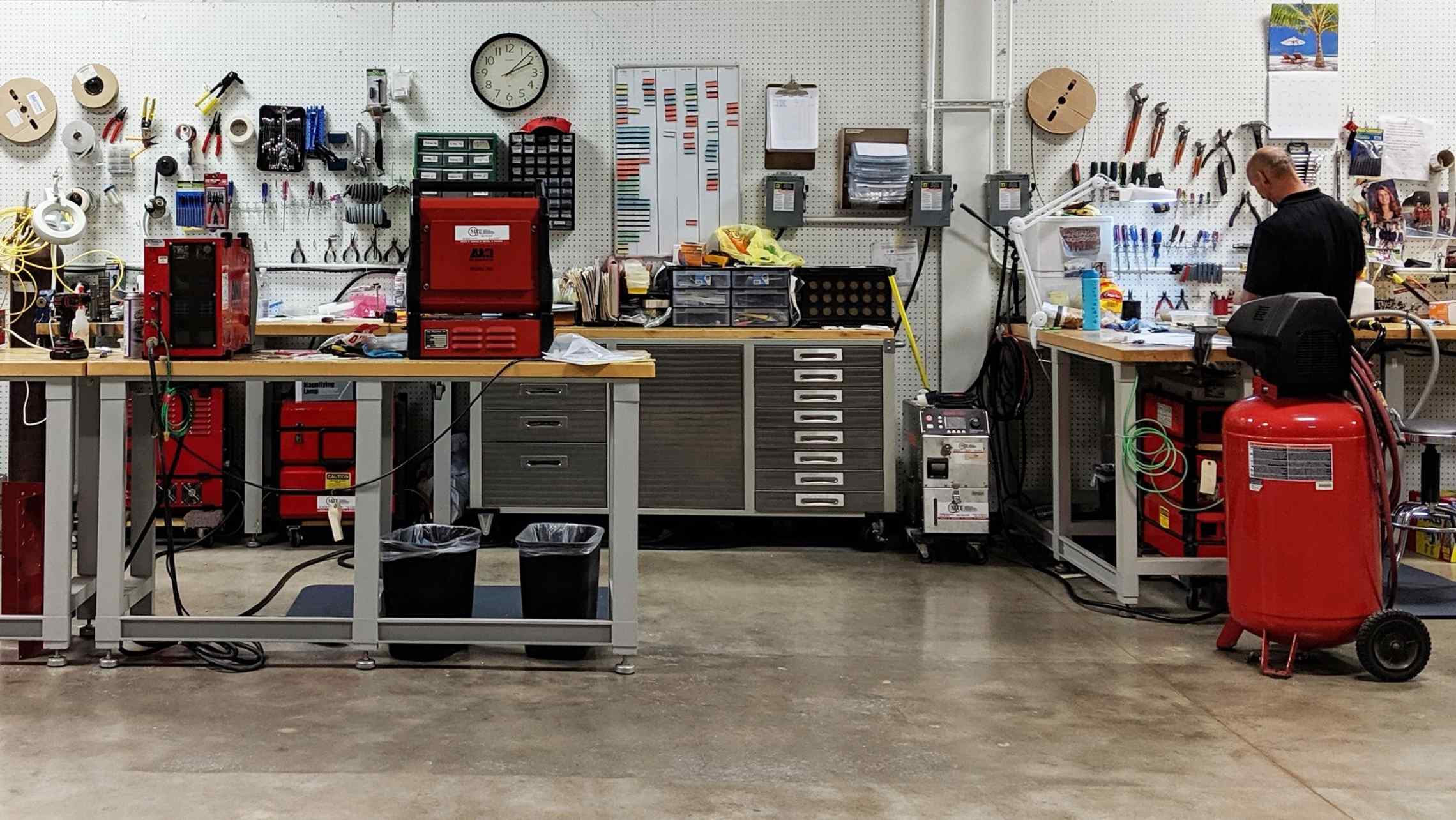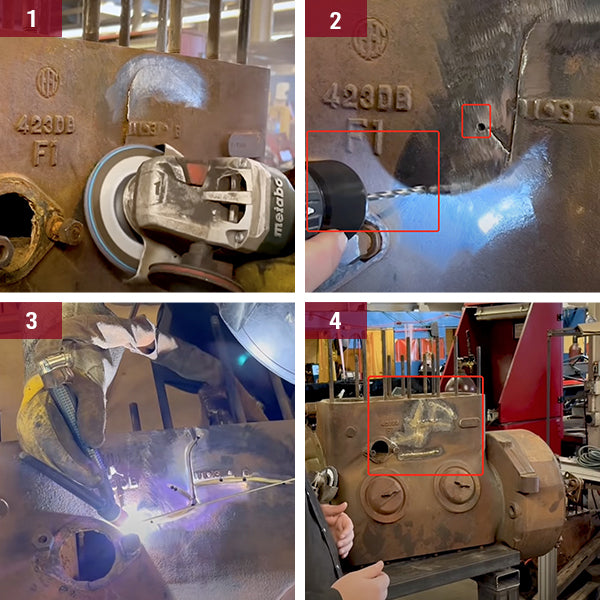Troubleshooting plan for weld distortion by Belgrade Fabrication
Typical Welding Repair Service Issues and Just How to Address Them Properly
Welding fixings typically come across a variety of issues that can threaten the stability of the end product. Usual problems include insufficient penetration, porosity, and imbalance, among others. Each issue presents one-of-a-kind difficulties that need details strategies for resolution. Comprehending these concerns is vital for welders aiming to enhance their outcomes and abilities. This discussion will certainly check out these common welding fixing concerns and reliable techniques to resolve them.
Poor Penetration
Insufficient infiltration occurs when the weld metal fails to completely fuse with the base product, causing weak joints and prospective structural failures. This problem typically stems from insufficient heat input, inaccurate electrode angle, or incorrect welding rate. Welders might encounter insufficient infiltration because of a miscalculation of the necessary specifications for a specific material thickness or type. Furthermore, contamination on the base product's surface area can hinder efficient bonding, aggravating the trouble. To attend to insufficient infiltration, welders must guarantee proper settings on their equipment and preserve a tidy job surface area. Routine inspection of welds is recommended to identify any deficiencies early, permitting prompt improvements and the avoidance of jeopardized structural stability in bonded settings up.
Porosity
Porosity is a typical defect in bonded joints that shows up as little gas bubbles caught within the weld metal. This flaw can jeopardize the honesty of the weld, causing reduced strength and prospective failure under anxiety. Belgrade Fabrication. Porosity commonly develops from contamination, wetness, or inappropriate welding methods, which allow gases to run away into the liquified weld swimming pool. To deal with porosity, welders need to guarantee correct surface prep work, maintain a tidy functioning atmosphere, and utilize appropriate welding criteria. In addition, selecting the right filler material and protecting gas can alleviate gas entrapment. Regular inspection and testing of welds can help determine porosity early, assuring timely rehabilitative activities are taken, consequently maintaining the top quality and integrity of the welded structure
Imbalance
Misalignment in welding can arise from various aspects, including improper arrangement and thermal development. Understanding the origin is important for effective resolution. Several correction methods are available to straighten parts and assure architectural honesty.
Causes of Imbalance
Welding misalignment typically originates from a variety of underlying concerns that can endanger structural integrity. One main cause is improper fit-up of components prior to welding, which can result in gaps and uneven surface areas. Variants in thermal development throughout the welding process can also cause distortion, specifically if the materials being joined have various coefficients of growth. Additionally, insufficient clamping and fixturing may fail to hold parts safely in position, bring about movement during welding. Badly maintained devices, including welding devices and devices, may present incongruities in the weld bead, more adding to imbalance. Driver error, stemming from inadequate training or experience, can also play a substantial function in producing misaligned welds.

Correction Strategies Offered
Resolving misalignment properly needs a combination of rehabilitative techniques customized to the specific concerns available. One typical method is making use of components or jigs to hold elements in the proper position during welding, guaranteeing consistent positioning. Additionally, preheating the materials can aid lower distortion and improve fit-up. For significant misalignment, mechanical adjustment methods, such as utilizing hydraulic jacks or clamps, can be used to remedy the position prior to welding. Post-weld heat therapy may likewise be required to eliminate stresses brought on by misalignment. Cautious examination and change throughout the arrangement phase can protect against imbalance issues from becoming substantial troubles, promoting a smoother welding process and enhancing total architectural honesty.
Distortion
Distortion is a typical difficulty in welding that can emerge from various elements, consisting of irregular cooling and heating. Recognizing the sources of distortion is crucial for carrying out efficient avoidance techniques. Addressing this concern not just boosts structural integrity however likewise boosts the total high quality of the weld.
Reasons for Distortion
When based on the intense warmth of welding, products usually undertake changes that can lead to distortion. This phenomenon largely develops from thermal development and contraction throughout the welding process. As the weld location warms up, the material increases; upon air conditioning, it gets, which can produce internal stresses. In enhancement, uneven heating throughout a work surface can worsen these tensions, leading to bending or flexing. The sort of product additionally plays a substantial role; steels with varying thermal conductivity and coefficients of expansion might respond in a different way, leading to unpredictable distortions. Bad joint style and poor fixturing can contribute to imbalance during welding, increasing the possibility of distortion. Recognizing these reasons is vital for reliable welding fixing and prevention strategies.
Avoidance Techniques
Reliable prevention techniques for distortion during welding concentrate on controlling heat input and making sure appropriate joint design. Preserving a regular warmth input helps to decrease thermal growth and contraction, which can bring about distortion. Utilizing techniques such as preheating the work surface can also minimize the temperature level slope, advertising consistent home heating. Furthermore, picking proper joint designs, such as T-joints or lap joints, can boost stability and decrease tension focus. Applying correct fixturing to safeguard the work surfaces in position additionally help in preserving alignment throughout the welding process. Staggered welding series can disperse warm much more uniformly, stopping local distortion. By applying these techniques, welders can substantially lower the chance of distortion and enhance the general high quality of their welds.
Breaking
Fracturing is a typical problem experienced in welding repair services, usually resulting from various variables such as incorrect air conditioning rates, product selection, or insufficient joint preparation. The event of fractures can substantially jeopardize the stability of the weld, leading to prospective failings throughout procedure. To address this issue, welders should initially examine the origin, ensuring that products are suitable and suitably more info chosen for the particular application. Additionally, controlling the cooling rate throughout the welding process is essential; fast cooling can induce stress and result in cracking. Correct joint layout and prep work likewise add to minimizing the threat. Executing these techniques can improve weld top quality and toughness, inevitably decreasing the possibility of splitting in ended up weldments.

Insufficient Blend
A significant concern in welding fixings is insufficient blend, which occurs when the weld steel does not effectively bond with the base material or previous weld passes - Montana Mobile Welding and Repair Fabrication. This issue can bring about weak points in the joint, possibly jeopardizing the honesty of the bonded framework. Aspects contributing to insufficient blend include insufficient heat input, incorrect welding strategy, and contamination of the surfaces being signed up with. To resolve this problem properly, welders should ensure appropriate pre-weld cleansing and surface area prep work, in addition to adjust their welding specifications to accomplish ample infiltration and combination. Normal examination during the welding procedure can additionally help identify insufficient fusion early, enabling for prompt corrective measures to boost the general high quality of the weld
Overheating
While welding repairs can improve architectural honesty, overheating provides a substantial obstacle that can lead to material degradation. Excessive warmth during welding can change the mechanical residential or commercial properties of steels, leading to lowered stamina, boosted brittleness, and bending. This phenomenon is especially critical in high-stress applications where structural reliability is vital. Identifying getting too hot can entail visual inspections for discoloration or distortion, as well as keeping an eye on temperature during the welding procedure. To reduce the threats related to getting too hot, welders should use ideal techniques, such as controlling warmth input, readjusting traveling rate, and using ideal filler materials. Furthermore, implementing pre- and post-weld warm therapies can help recover material residential or commercial properties and boost the overall high quality of the repair, guaranteeing lasting efficiency and security.
Regularly Asked Questions
What Are the Usual Signs of a Welding Problem?

Exactly How Can I Examine My Welds for High quality?
To check welds for top quality, one can utilize aesthetic assessments, ultrasonic testing, and radiographic methods. Each method ensures architectural integrity, determines issues, and confirms adherence to specified standards, inevitably enhancing the dependability of the welded joints.
What Safety Preventative Measures Should I Take While Welding?
When welding, one must prioritize safety and security by using appropriate personal safety tools, ensuring correct air flow, securing flammable materials away, keeping a clean work area, and understanding surroundings to stop mishaps and injuries.
Can I Fix a Weld Without Renovating the Entire Joint?
Fixing a weld without remodeling the whole joint is feasible, depending on the damages (Belgrade). Strategies such as grinding, including filler product, or using a welding procedure can efficiently deal with particular defects while protecting the surrounding structure
What Tools Are Necessary for Efficient Welding Fixes?
Vital tools for reliable welding fixings include a welding device, cord brush, grinder, safety equipment, clamps, and filler products. Each tool plays a vital duty in guaranteeing quality and safety throughout the fixing procedure. Porosity generally arises from contamination, wetness, or improper welding methods, which allow gases to leave into the molten weld swimming pool. Poorly conserved devices, including welding equipments and tools, may present variances in the weld bead, further adding to misalignment. When subjected to the extreme warmth of welding, materials commonly undergo adjustments that can lead to distortion. Breaking is an usual issue encountered in welding fixings, often resulting from different variables such as inappropriate air conditioning prices, material choice, or inadequate joint prep work. A considerable issue in welding repairs is incomplete blend, which happens when the weld steel does not properly bond with the base product or previous weld passes.